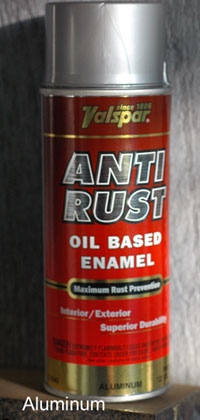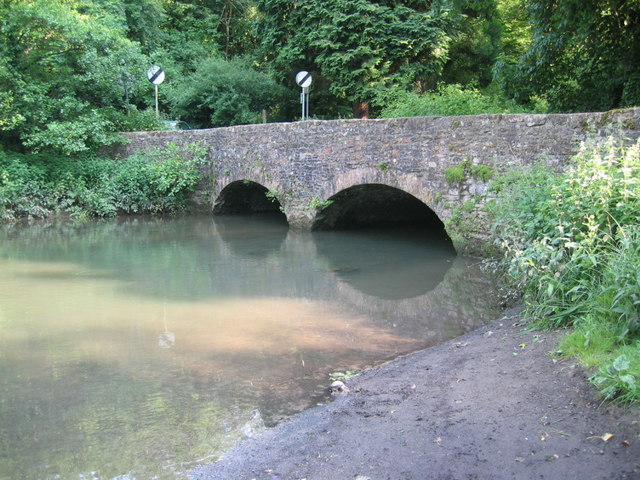|
National Cycle Route 24
National Cycle Route 24, otherwise known as the ''Colliers Way'' currently runs from Dundas Aqueduct to Frome via Radstock, although it is intended to provide a continuous cycle route from Bristol and South Wales to Southampton and Portsmouth. Route The route follows a mixture of low traffic roads and old railway lines serving the Somerset coalfield. There is a visitor centre, cycle shop and cafe at Dundas Aqueduct, where this route meets NCR 4 on the Kennet & Avon Canal. From there it follows a road to Midford. The next section proceeds to Wellow and then past Peasedown St John and Foxcote to Radstock. It then follows an old railway line past Kilmersdon, Buckland Dinham and Mells to Great Elm. An interim route is then provided along lanes from Great Elm through Vallis Vale (among other less hilly routes) into Frome, as the continuous cycle path ends in Great Elm. The track running from Great Elm is still in use by the local quarries for distribution of locally mined lime ... [...More Info...] [...Related Items...] OR: [Wikipedia] [Google] [Baidu] |
Peasedown St John
Peasedown St John (commonly referred to as Peasedown) is a village and civil parish in Somerset, England, standing on a hilltop roughly south-southwest of the city of Bath, and north-east of the town of Radstock at the foot of the Mendip Hills. Peasedown used to be a coal mining village, and after the last of the mines shut in the 1970s it became a dormitory village for Bath, Trowbridge and to a lesser extent Bristol. Its size was increased by substantial housing developments in the 1960s, 1970s and late 1990s, making it one of the largest villages in Somerset. History Archaeological and documentary evidence shows that the site has been occupied from at least the early Iron Age. There is good evidence of Roman and Saxon villages in the area, the Saxon settlements resulting in several entries in the Domesday Book of 1086. The medieval settlement of Eckweek was excavated in 1989, and now lies under the Peasedown Bypass and Underknoll Road. The present village of Peasedown St Joh ... [...More Info...] [...Related Items...] OR: [Wikipedia] [Google] [Baidu] |
Copper
Copper is a chemical element with the symbol Cu (from la, cuprum) and atomic number 29. It is a soft, malleable, and ductile metal with very high thermal and electrical conductivity. A freshly exposed surface of pure copper has a pinkish-orange color. Copper is used as a conductor of heat and electricity, as a building material, and as a constituent of various metal alloys, such as sterling silver used in jewelry, cupronickel used to make marine hardware and coins, and constantan used in strain gauges and thermocouples for temperature measurement. Copper is one of the few metals that can occur in nature in a directly usable metallic form ( native metals). This led to very early human use in several regions, from circa 8000 BC. Thousands of years later, it was the first metal to be smelted from sulfide ores, circa 5000 BC; the first metal to be cast into a shape in a mold, c. 4000 BC; and the first metal to be purposely alloyed with another metal, tin, to create ... [...More Info...] [...Related Items...] OR: [Wikipedia] [Google] [Baidu] |
Enamel Paint
Enamel paint is paint that air-dries to a hard, usually glossy, finish, used for coating surfaces that are outdoors or otherwise subject to hard wear or variations in temperature; it should not be confused with decorated objects in "painted enamel", where vitreous enamel is applied with brushes and fired in a kiln. The name is something of a misnomer, as in reality, most commercially available enamel paints are significantly softer than either vitreous enamel or stoved synthetic resins, and are totally different in composition; vitreous enamel is applied as a powder or paste and then fired at high temperature. There is no generally accepted definition or standard for use of the term "enamel paint", and not all enamel-type paints may use it. Use Enamel Paint with Brush, roll, or spray paint for home projects that require either extreme durability or a glassy, glossy finish. Paint Typically the term "enamel paint" is used to describe oil-based covering products, usually with a signi ... [...More Info...] [...Related Items...] OR: [Wikipedia] [Google] [Baidu] |
Industrial Etching
Chemical milling or industrial etching is the subtractive manufacturing process of using baths of temperature-regulated etching chemicals to remove material to create an object with the desired shape. Other names for chemical etching include photo etching, chemical etching, photo chemical etching and photochemical machining. It is mostly used on metals, though other materials are increasingly important. It was developed from armor-decorating and printing etching processes developed during the Renaissance as alternatives to engraving on metal. The process essentially involves bathing the cutting areas in a corrosive chemical known as an etchant, which reacts with the material in the area to be cut and causes the solid material to be dissolved; inert substances known as maskants are used to protect specific areas of the material as resists. History Organic chemicals such as lactic acid and citric acid have been used to etch metals and create products as early as 400 BCE, wh ... [...More Info...] [...Related Items...] OR: [Wikipedia] [Google] [Baidu] |
Weymouth, Dorset
Weymouth is a seaside town in Dorset, on the English Channel coast of England. Situated on a sheltered bay at the mouth of the River Wey, south of the county town of Dorchester, Weymouth had a population of 53,427 in 2021. It is the third largest settlement in Dorset after Bournemouth and Poole. The history of the town stretches back to the 12th century and includes roles in the spread of the Black Death, the settlement of the Americas and the development of Georgian architecture. It was a major departure point for the Normandy Landings during World War II. Prior to local government reorganisation in April 2019, Weymouth formed a borough with the neighbouring Isle of Portland. Since then the area has been governed by Dorset Council. Weymouth, Portland and the Purbeck district are in the South Dorset parliamentary constituency. A seaside resort, Weymouth and its economy depend on tourism. Visitors are attracted by its harbour and position, halfway along the Jurassic Coast ... [...More Info...] [...Related Items...] OR: [Wikipedia] [Google] [Baidu] |
Limestone
Limestone ( calcium carbonate ) is a type of carbonate sedimentary rock which is the main source of the material lime. It is composed mostly of the minerals calcite and aragonite, which are different crystal forms of . Limestone forms when these minerals precipitate out of water containing dissolved calcium. This can take place through both biological and nonbiological processes, though biological processes, such as the accumulation of corals and shells in the sea, have likely been more important for the last 540 million years. Limestone often contains fossils which provide scientists with information on ancient environments and on the evolution of life. About 20% to 25% of sedimentary rock is carbonate rock, and most of this is limestone. The remaining carbonate rock is mostly dolomite, a closely related rock, which contains a high percentage of the mineral dolomite, . ''Magnesian limestone'' is an obsolete and poorly-defined term used variously for dolomite, for limes ... [...More Info...] [...Related Items...] OR: [Wikipedia] [Google] [Baidu] |
Great Elm
Great Elm is a village and Civil parishes in England, civil parish between Mells, Somerset, Mells and Frome in the Mendip District, Mendip district of Somerset, England. The parish includes the hamlet of Hapsford. History The name Great Elm was recorded as ''Telma'' in the Domesday Book of 1086, and then as ''Teames'' in 1236 which is a contraction of ''aet elm'' ''at the elm tree''. Little Elm developed into the village of Chantry, Somerset, Chantry. At Tedbury Camp southwest of the village a pot of Roman coins was dug up in 1961. After the Norman Conquest the manor was held by the Giffards and later by the Hidges family and then the Stracheys. The parish was part of the Hundred (county subdivision), hundred of Frome (hundred), Frome. For many years in the 18th and 19th centuries Great Elm was the site of water powered mills owned by James Fussell IV. The Stracheys owned Rock House for a period early in the 20th century. Hapsford House on Hapsford Hill is a 19th-century co ... [...More Info...] [...Related Items...] OR: [Wikipedia] [Google] [Baidu] |
Mells, Somerset
Mells is a village and civil parish in Somerset, England, near the town of Frome. Vobster The parish includes the village of Vobster, which had a coal mine of the same name on the Somerset coalfield and a quarry, both of which are now disused. The old quarry is now used as a diving centre. The Church of St Edmund, at Vobster by Benjamin Ferrey, dates from 1846 and is a Grade II listed building. Vobster Inn Bridge, which carries the lane over the Mells River, is dated 1764, and is Grade II listed. History and description In the Domesday Book of 1086 the village was known as "Mulne" meaning several mills. The parish was part of the hundred of Frome. Around 1500 Mells seems to have been known as ''Iron Burgh'', as a result of the iron ore extracted in the area. The village hall was built in the 14th century as a tithe barn for Glastonbury Abbey and now serves as the village hall. During the 19th and early 20th centuries Mells and surrounding villages had several coal mines on ... [...More Info...] [...Related Items...] OR: [Wikipedia] [Google] [Baidu] |
Buckland Dinham
Buckland Dinham is a small village near Frome in Somerset, England. The village has a population of 381. The village's main industry is farming (arable and dairy), but the village is also a dormitory village for the nearby cities of Bath and Bristol. History In 951 King Eadred granted land at Buckland to his relative Ælfhere. The village used to be known as Buckland Denham. Denham is believed to be a family name (there are many other villages with Denham in their name) whilst Buckland may refer to a former deer population. Although Buckland Dinham itself does not have a manor house, it is close to Orchardleigh Estate. There are signs of prehistoric archaeology. A hand axe has been found in Lower Street (which follows the spring line). Kingsdown Camp is an Iron Age hill fort. It is a Scheduled Ancient Monument. It is a univallate fort with an area of , and is approximately quadrilateral in shape. In the Iron Age or Roman period a drystone wall was constructed, possibly h ... [...More Info...] [...Related Items...] OR: [Wikipedia] [Google] [Baidu] |
Kilmersdon
Kilmersdon is a village and Civil parishes in England, civil parish on the north eastern slopes of the Mendip Hills in Somerset between the towns of Radstock and Frome. It is located on the B3139 between Wells, Somerset, Wells and Trowbridge in Wiltshire. The settlement is recorded in William I's Domesday book and dates back at least 1,000 years; though the core of the village dates from the mid nineteenth century. The parish includes the hamlets of Charlton, South View and Green Parlour. History The name Kilmersdon means 'Cynemaer's Hill'. The parish was part of the Kilmersdon (hundred), Kilmersdon Hundred (county subdivision), Hundred. Kilmersdon is said to be the "home" of the Jack and Jill (nursery rhyme), Jack and Jill nursery rhyme, the fabled hill being recently restored as part of a local Millennium scheme. Immediately adjacent to the newly restored well is Kilmersdon Primary School, which was established (though not in the current building) in 1707. Other amenities i ... [...More Info...] [...Related Items...] OR: [Wikipedia] [Google] [Baidu] |




